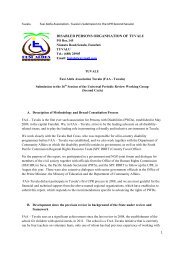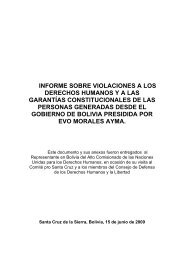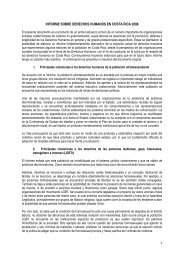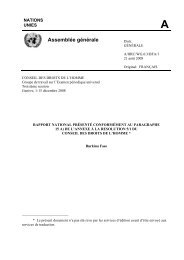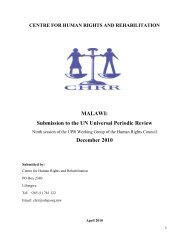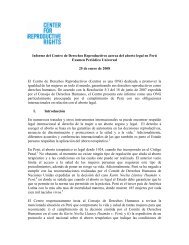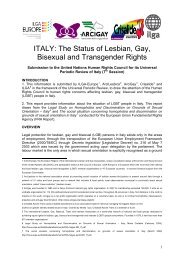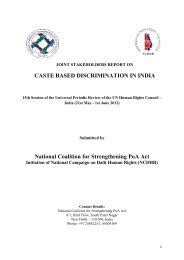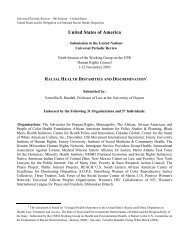Prison Needle Exchange: Lessons from a Comprehensive Review ...
Prison Needle Exchange: Lessons from a Comprehensive Review ...
Prison Needle Exchange: Lessons from a Comprehensive Review ...
You also want an ePaper? Increase the reach of your titles
YUMPU automatically turns print PDFs into web optimized ePapers that Google loves.
the prisoners who were injecting, a lack of anonymity and of<br />
confidentiality in the service, and the fact that needle exchange<br />
was only available during office hours. According to Dr<br />
Bodrug, “To make the needle exchange genuinely anonymous,<br />
we recruited eight secondary exchange volunteers to work<br />
throughout the penal colony. The advantage is a much higher<br />
degree of trust and confidentiality.” 207 This decision inaugurated<br />
stage two of the program.<br />
Under stage two of the program, eight peer volunteers were<br />
trained to provide harm-reduction services in four different<br />
sites in the prison. Two peer volunteers were assigned to work<br />
at each site and they are available on a 24-hour basis, as the<br />
sites are based within the prison living units (barracks-style<br />
accommodations, with 70 or more men living and sleeping in<br />
the same large room). The activities and programs are carried<br />
out in cooperation with the prison physician. The role of the<br />
physician is to act as project supervisor and as a link between<br />
the peer volunteers, prison staff, and Health Reform in <strong>Prison</strong>s personnel. In the first nine<br />
months of 2002, 65% to 70% of people known to inject drugs in the prison were accessing<br />
the program through the peer volunteers. In 2002, the peer volunteers in PC18 exchanged<br />
7150 syringes. 208<br />
Harm reduction and<br />
HIV-prevention information,<br />
<strong>Prison</strong> Colony 18, Branesti, Moldova.<br />
(photo: Elena Vovc)<br />
Evolution of Syringe <strong>Exchange</strong> in <strong>Prison</strong> Colony 18:<br />
<strong>Needle</strong>s <strong>Exchange</strong>d Annually 209<br />
YEAR SYRINGES EXCHANGED<br />
2000 115<br />
2001 4350<br />
2002 7150<br />
In addition to one-for-one syringe exchange, peer volunteers also distribute condoms, disinfectants,<br />
antiseptic pads, and razors for shaving. They also provide harm-reduction and HIVprevention<br />
information, including information on safer injecting and post-injection problems.<br />
The team of peer volunteers changes every year.<br />
Expansion to other prisons<br />
Based upon the success of the pilot project, on 16 May 2002 Order<br />
52 authorized the implementation of a second needle exchange project<br />
in <strong>Prison</strong> Colony 4, a men’s institution in Cricova housing 1200<br />
prisoners. This program is also peer based and uses three peer volunteers.<br />
During the first few months of the project, approximately<br />
40 to 45 prisoners used the exchange. By the end of the year the<br />
number of prisoners accessing the needle exchange program had<br />
increased to approximately 160. 210 In PC4, the peer volunteers<br />
exchanged 7555 syringes during 2002. 211<br />
Peer volunteers also<br />
distribute condoms,<br />
disinfectants, antiseptic pads,<br />
and razors for shaving.<br />
<strong>Review</strong> of International Evidence 39



